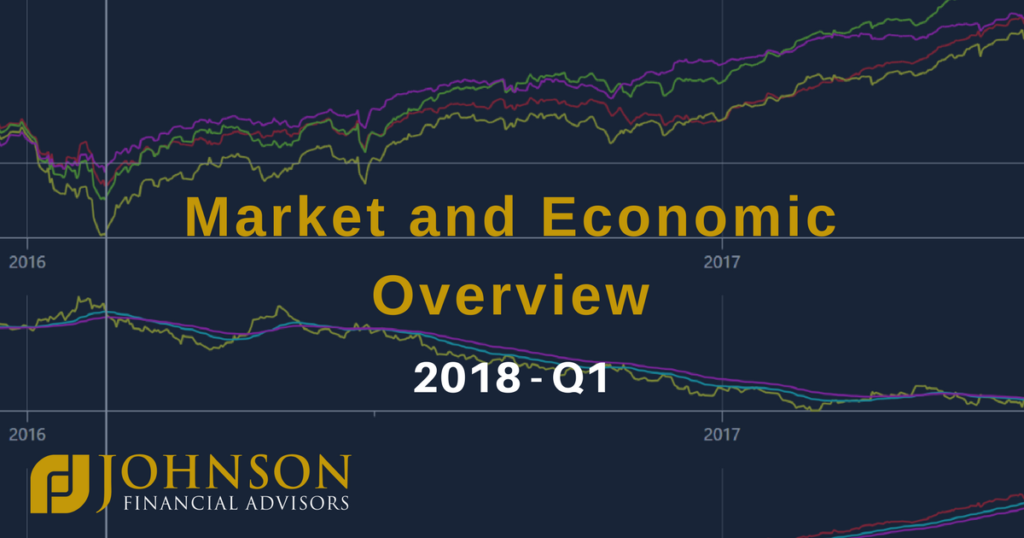
JFA Market Update 2018-Q1
We are glad 2017 is in the history books. It’s been a very intense year with Washington turmoil, nuclear threats, and massive natural disasters. But the good news is that the stock market paid little attention to tweets, polls or weather forecasts. It not only gave us a stellar performance in 2017, but the final quarter ended with an exclamation point, with all major indexes reaching record levels.
For nearly 100 months, the U.S. economy has been growing (i.e. no recession), an expansion exceeded in length only two times since 1900.1 Even though we cautiously look for signs of “irrational exuberance,” the bottom line is almost all economic indicators point toward steady gains continuing in 2018.
Global Growth
We are witnessing a “synchronized global recovery” from the financial crisis of 2008. Some analysts expect the global economy to grow 3% or more in 2018. The U.S. economy grew by 2.3% in 2017 and will likely exceed that in 2018. Global growth will put more pressure on the dollar, which may hurt exports, but most other considerations are favorable. Emerging markets are also expected to be strong in 2018.
Inflation
The Consumer Price Index (CPI) was up 2.2% last year, just above the Federal Reserve’s target of 2% for inflation. But because of low unemployment and an increase in new jobs, the labor market could tighten in 2018. This is good news for workers and could translate to higher wages. But it may be worrisome for the hawks at the Fed. We expect several interest rate hikes in 2018 to keep the economy from over-heating. (The Fed raised rates three times last year.)
Tax Cuts
An added boost in 2018 will be the impact of lower corporate and personal income taxes. American companies are now on a more level playing field with other countries. The top U.S. corporate tax rate is now 21% (down from 35% previously). The worldwide average corporate tax rate is 22%.
Individual households are expected to shave between $1,000-3,000 off their tax bill.2 This will probably be a boost to consumer spending, which drives 70% of our economy.
How Long Will the Party Last?
Even though the current economic sky is blue and the forecast is for more blue skies, as advisors we can’t help but search the horizon for a cloud or two. We know a correction would be healthy for the overall market. “It’s rare when you have an investing climate like this one, where it’s all but impossible to find something to worry about, either domestically or globally,” notes James Stack, a market historian. Since no one has a crystal ball to foresee the catalyst for a correction or bear market, we can learn from history. “Most bull markets die by the sword of the Fed (i.e. high-interest rates),” says Mr. Stack.3
HISTORIC INTEREST RATES – Do you remember the pain?
Our firm was founded in 1981 during the midst of a recession when interest rates were 18%. (In 1980 they set a record at 20%.) Today the Federal Funds Rate is 1.5%. Yes, we are in an era of raising interest rates, but it helps to keep it all in perspective. As investors, we should be cautious, keep an umbrella handy, but try to enjoy the blue skies!
